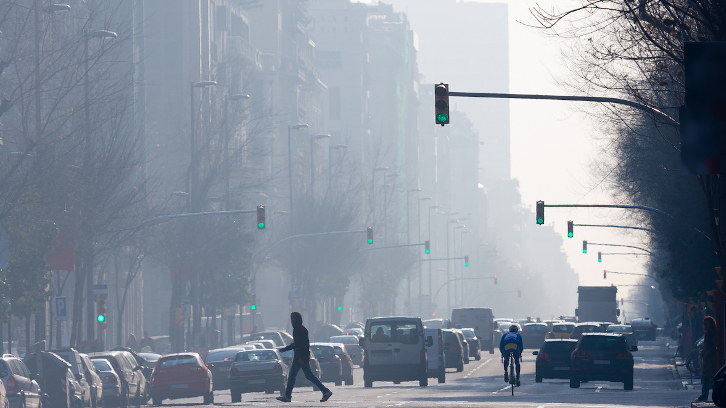The intersection of environmental justice and transportation emissions in Barcelona
A study from the UAB sheds light on the political dimensions of air pollution in Barcelona city. The research demonstrates that power structures tied to patriarchy, racism, and ageism impact travel behavior and emissions of nitrogen oxides (NOx). The findings underscore the necessity for policies that address social inequalities to enhance air quality and advance environmental justice.

The World Health Organization (WHO) considers air pollution as one of the main global threats to public health. However, the atmosphere is rarely conceived as a political space where dynamics of power and governance structures overlap, resulting in inequalities. To begin with, air pollution often concentrates in historically disadvantaged neighborhoods. Thus, some communities are disproportionately exposed to poor air quality and its health risks (such as asthma, heart diseases, and mental disorders). However, urban policies can influence air quality and emissions. Measures such as low emission zones, superblocks, or green corridors reflect political priorities and the distribution of public resources in cities like Barcelona. If breathing polluted air is a result of social and political inequalities, is it also the act of polluting?
In this context, we study how power structures associated with patriarchy, racism, and ageism influence travel behavior and, consequently, emissions derived from mobility. The goal is to understand how the combination of gender, age, and migration influences each person's emissions. The study region, the Metropolitan Area of Barcelona (AMB for its Catalan acronym), has one of the highest levels of air pollution in Europe, exceeding the safety thresholds recommended by the WHO. In turn, road transport is the major emission source for one of the main air pollutants, nitrogen oxides (NOx).
We have analyzed a mobility survey that asks about the daily trips to a representative sample of AMB residents. Then, we calculated NOx emissions resulting from each person's mobility habits. For example, if a person says they have taken the subway for 10 minutes, they are assigned the corresponding emissions for that trip according to the European Environmental Agency's Emissions Guide and added to the rest of the displacements.
The results show that identities linked to power structures contribute more to air pollution. That is, middle-aged European-born men are the ones emitting the most NOx due to their trips. This is because the privileges associated with these identities offer unrestricted access to the most polluting means of transport, such as private motorized vehicles. To improve the air quality we breathe, there is an opportunity for this population group to reduce emissions by adopting the sustainable travel practices of other groups. On the contrary, people who embody intersectional experiences of oppression such as misogyny, racism, or ageism have lower emission levels.
Based on these results, we propose that policies recognize the unequal distribution of responsibilities, offering an opportunity to improve air quality and community health while advancing issues of social and environmental justice.
Jerònia Cubellsa, Carme Miralles-Guascha,b, Oriol Marqueta,b
a Mobility, Transport and Territory Study Group (GEMOTT) Department of Geography
b Institute of Environmental Science and Technology (ICTA-UAB)
Jerònia Cubells, Carme Miralles-Guasch, Oriol Marquet, Traffic pollution as a privilege: An intersectional approach to environmental justice and transport emissions, Transportation Research Part D: Transport and Environment, Volume 126, 2024, 104032, ISSN 1361-9209, https://doi.org/10.1016/j.trd.2023.104032.